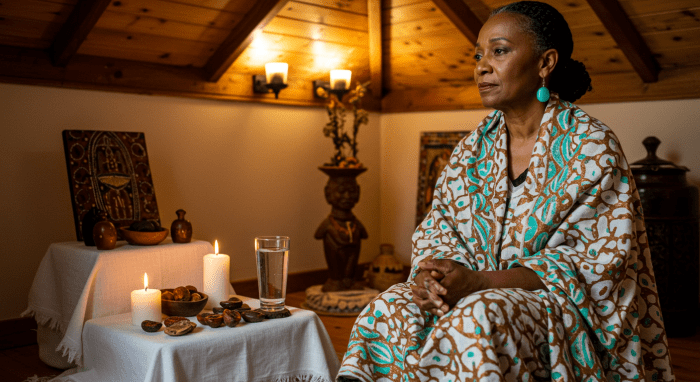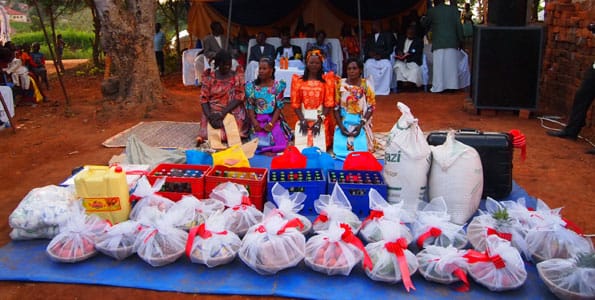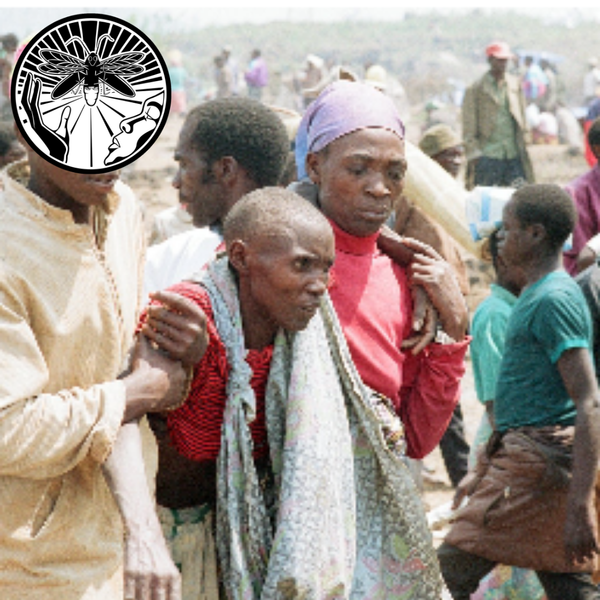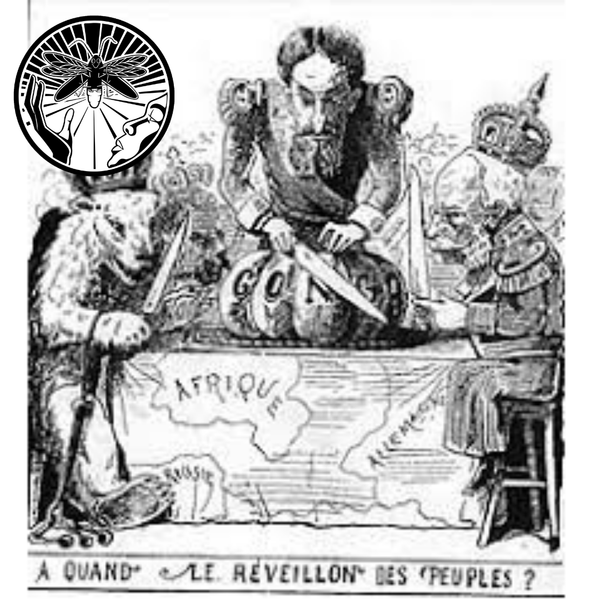Catastrophe in Meritah’s Great Lakes - Part II: A History of Attacks
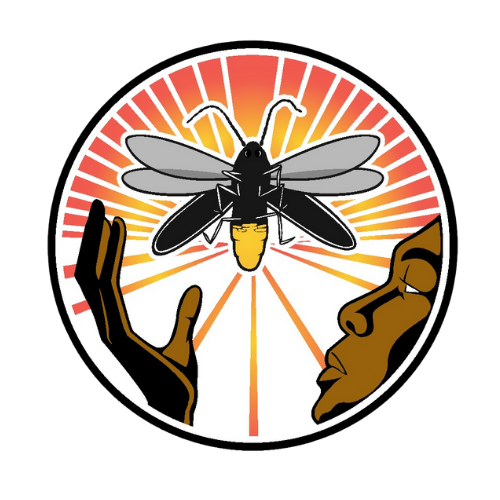
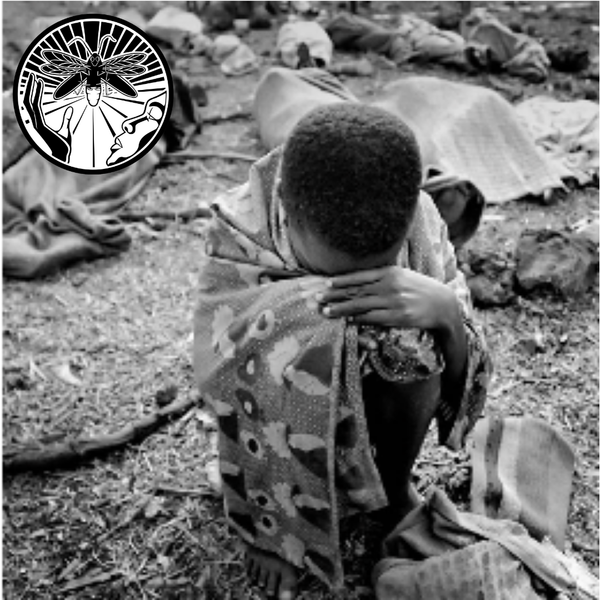
By Kasabez Maakmaah
“The wildest beast is locked in the cage, and that cage can be found in the human heart; one only needs to find the key that will open the cage and one will be surprised by the ferocity and the barbarism that the human being is capable of.”
- Prophet Neb Naba Lamoussa Morodenibig.
Try to imagine, really, try and see if you can imagine 1 million people being massacred in 100 days. Seriously, think of the last time you smelled the carcass of one small dead animal next to your house. Now imagine the carnage of thousands of dead human bodies piled by the roadside. Consider, really, if this was happening in your neighborhood, to your neighbors, or to your family, or to you. You are stopped on the road by the military or maybe a group of your neighbors with guns and large knives and you are asked for your ID. On your ID, it says that you are a member of a particular ethnicity. If you are a man, they kill you and throw your body on a pile of bodies nearby. If you are a woman, maybe all of them rape you and then kill you, or if they like you, they keep you around and do it some more.
The 1994 genocide in Rwanda remains a bloody stain on human history that is still difficult to process. We tend to see the murder of one innocent or defenseless person as a tragedy. Most recently, the “Black Lives Matter” movement has swept the United States in response to police brutality. Every summer, hundreds of killings in major US cities lead us to cry out for change. Imagine now, in one spring, one million killings. It doesn’t seem real.
If we understand human nature, we know that one does not simply wake up and decide to kill his neighbor. Certainly a whole group of people doesn’t suddenly decide to kill every member of another group within the borders of an entire country. It must be made clear that if something like this is possible, it is a problem for all humanity, not only those directly involved. We must work our brains to understand how something like this can happen. If not, we are taking a risk because something like this can happen anywhere.
HISTORICAL CONTEXT
When speaking historically of Rwanda, it’s common to hear that the Hutu and Tutsi, also referred to as Bahutu and Batutsi, were migrant cultures who imposed themselves on the Twa (or Batwa) who are indigenous to the region. To understand the situation in a broader context, it helps us to know the major reason for the movements of humans throughout Meritah for the past 2000 years. The Nile Valley is the capital of the Kemetic Civilization that originated in Meritah. As humanity’s first civilization, Kemet was known worldwide for its wealth and abundance. Since before 1000 BCE, the “Valley of Kings,” had withstood brutal and unending campaigns of conquest by Greco-Romans, Persians and others. Eventually, the high-priest- hood, guardians of the deepest secrets and the royalty led their people away from the Nile Valley regions inland, throughout the continent of Meritah and to other continents to preserve their culture by escaping the attacks of the invaders and to rebuild their civilisations. One obvious direction of retreat would have been upstream to the source of the Hapi (Nile) River, the Great Lakes region of Meritah. Other historic routes were across the Sahara Desert to Western Meritah and through the jungles of the Congo River basin to Central and Southern Meritah.
The invasions of Meritah took many forms, but the agenda seems to have remained constant for the last 3000 years until the present conflicts over the Great Lakes region’s minerals: control of resources. Kemetic people were known worldwide for having domesticated plants and animals and mastered metal-working, architecture, astronomy, seafaring, spirituality, etc. Many of the invader cultures lacked these abilities, so when they traveled to Meritah, they found what they considered paradise. They assumed that the way to access and control these resources was by conquering the throne of the Pharaoh and subjugating the Kemetic people.
Following the migration of the Kemmioo from the Nile valley, the conquests only continued as Arab empires gained ground in the east of the continent and Romans in the north. As the influence of these empires spread, those focused on preserving their Kemetic values would have to continue to migrate, fleeing the brutality of these invaders and rebels. As the invaders spread throughout Meritah, their values doubtlessly had an impact on the cultures of the people they invaded.
Invasions don’t just happen because some people are simply bad people. Evil is the real conqueror which influences human beings to attack other human beings. In response, those attacked often give in to evil and go on to attack others. Evil spreads this way. Culture and values are what guide us toward or away from evil behavior. Societies led by humans conquered by evil have continuously invaded Kemetic societies for over 3000 years. The strategy for conquest has been the gradual erosion of Kemetic values, which are based on the preservation of life. This erosion of values in Meritah and around the world often leaves the victims of these invasions vulnerable to being convinced of the logic of destruction that they are victims of. These victims often abandon their traditions and become absorbed into the conquering social structure, giving more power to their leaders. This is why the Kemetic Mystery Schools teach that evil does not have a face...
European explorers first entered Rwanda in 1894 (though they had reached surrounding areas 40-50 years prior). To better understand the next 100 years leading up to the 1994 genocide, it’s necessary to add some context to the situation at the time of this first contact by Europeans. The mwami (king), Rwabugiri had ruled the kingdom of Rwanda since 1853 and was in the last year of his reign. Although his administration had no prior direct contact with the European invaders, foreign influences were already having an impact.
By the time of Mwami Rwabugiri’s reign, we had already seen the horrors of the Trans-Atlantic Slave Trade coming to a close, but by this time the profits from this “triangle” trade had empowered the European nations tremendously and goods from these trades were being sold extensively in Meritah. Before European explorers, merchants and missionaries ever ventured to the Great Lakes of Meritah, Arab kingdoms had long since been established along the northern and eastern coasts of Meritah and had established trade routes into the interior of the continent.
Since there was extensive commerce between the Arabs and the Europeans at that time, goods from across the world, from Maanu (the Americas) and Europe to Asia and the Pacific islands were being sold in the Great Lakes region. These goods included new crops, European and Arab style clothes, jewelry and, of course, guns. Major “commodities” sought by the Arab traders were food, salt, ivory and human beings. The Arab slave trade was possibly as brutal as the European slave trade and most likely has continued until the present. Mwami Rwabugiri is said to have participated in this Arab slave trade.
This commerce had significant effects on the culture of the Great Lakes region. The foreign clothing began to be common dress for royalty in the region. The authority of the royalty, who traditionally are selected from specific bloodlines on the premise of Divine Legitimacy, began to be challenged by wealthy men in the region. Other effects of these shifts of power don’t seem to have been given much attention by modern scholars, but just as we see the power of big corporations in manipulating governments and society today, the wealthy of that space and time used their influence to their advantage in a similar way.
IDENTITY OF HUTU AND TUTSI
In the infamous genocide of 1994, Hutu extremists led their countrymen attempt to kill all Tutsi’s in the country along with every Hutu who resisted this plot. To find the source of this hatred, the first step is to understand what a Hutu and a Tutsi is. Most commonly it is believed that the populations of Rwanda and Burundi are about 85% Hutu, 14% Tutsi and 1% Twa (pygmies). Beside the facts that these estimates are about 100 years old and there have been huge population shifts since that time, the major problem is that there are many conflicting theories about how these two “ethnic groups” came to be.
The Hutu and Tutsi are generally regarded as two distinct ethnic groups or even races originating from different places in Meritah, and having 2 distinct cultures. The Hutu are considered as primarily farmers who descend from the “Bantu” language family. Bantu is a term used to arbitrarily group together people in Central and Southern Meritah who are generally considered “Negroid”. The Tutsi are considered as cattle herders who descend Northeastern Meritah around present day Egypt, Sudan and Ethiopia, and therefore have a lighter complexion, straighter hair, thinner lips, etc. The theory is that the Tutsi invaded the region several hundred years ago and conquered the Hutu and ruled over them ever since. However, there is a lot of evidence against this theory.
Prior to colonialism, everyone in the region was associated with different clans or tribes. In Rwanda alone, the 2 million or so people were divided into at least 20 clans. Each one was divided into smaller clans which were further divided into lineages. People now categorized as Hutu or Tutsi were part of each of these major clans. Before 1900, the average man from the Great Lakes region, when asked his identity, would give the name of his clan rather than his status as Hutu or Tutsi. In traditional cultures, identity is determined by bloodline and lineage as demonstrated by this complex clan structure in Rwanda. The skin color is irrelevant. In this melting pot of people with ancestry coming from diverse parts of the world and living together for hundreds of years, the intermixing would have resulted in bloodlines with members of many different colors, hair textures, etc.
The Hutu and Tutsi cannot be different tribes, ethnic groups or races considering:
They belong to the same clans
They speak the same language
They serve the same royalty
If these are really the same people, the history of one group trying to exterminate the other is even more mind boggling.
Mwami Rwabugiri, in his 42 year reign, greatly expanded the Rwanda Empire and by the time the first Europeans arrived, the empire was roughly the same size as present day Rwanda. It is during his reign that we see more emphasis on the difference between Hutu and Tutsi become more established. Power became consolidated amongst those who owned larger quantities of cattle who were classified as Batutsi. Those who mostly subsisted from farming were known as Bahutu. The mwami established a system of forced labor called buletwa in which all Bahutu were supposed to spend 1 to 2 days of the 5 day week in service to their local royal court. Batutsi were said to be exempt from this requirement. These and other techniques of conquest and domination seem to have been absent or less severe in the reigns of previous mwamis.
The main distinguishing characteristic between Hutu and Tutsi seems to be whether they are farmers or cattle herders. In Kemetic Culture, cattle have always been known as sacred animals and are used in many ceremonies. They are therefore considered very valuable. To say that the Tutsi were the ones who owned most of the cattle may mean nothing more than the Tutsi’s were the rich and the Hutu were the poor in the region. In fact the language they both speak indicates this. Even if 2 men are Tutsi, the dominant one will refer to the other as “my hutu”.
However, after the 19th century, the identity as Hutu and Tutsi became more important to a point where people considered themselves Tutsi if their Ancestors were Tutsi and likewise with the Hutu, which is what we see now. Up until the present, the identity of Hutu or Tutsi continues to be passed through lineage. However, the increased importance of Hutu or Tutsi identity is due to the manipulation of the colonizers.
There have been many divide and conquer tactics used by the European elite. They are generally invented as needed from time to time to find new ways to fool the population into fighting each other. In the next issue of the Rising Firefly, we will explore religion and racism as weapons used to widen the divide between the Hutu and Tutsi and the resulting catastrophe. From 1894, the time the first Europeans arrived in Rwanda, it was only 100 years until the horrifying genocide in 1994. Only 100 years for a rich cultural fabric of over 20 tribes to be reduced to classification of Hutu and Tutsi. Only 100 years to manufacture a climate where the mass murder of 1,000,000 people in 100 days could be possible....

